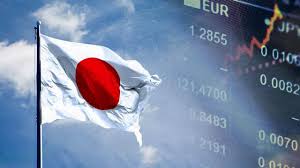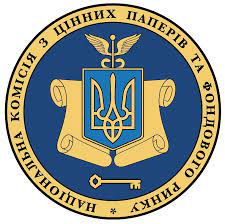Germany’s central bank expects the country’s economy to grow in April-June for the second consecutive quarter after falling at the end of 2023.
According to preliminary calculations of the statutory office of the Federal Republic of Germany, in January-March GDP increased by 0.2% compared to the previous three months. It fell 0.5% in October-December 2023.
“The economy is likely to expand slightly again in the second quarter,” the Bundesbank said in a statement on Wednesday.
Activity in the services sector was likely to have continued to strengthen on the back of rising household income and consumer spending.
“Growth in household disposable income is likely to take the upper hand from consumer uncertainty,” Central Bank analysts suggested.
However, they noted that the construction sector remains very weak.
The German labor market is expected to remain resilient and wages look set to continue to rise rapidly. This could be a risk to cooling inflation, which the Bundesbank estimates will accelerate slightly again in May.
The final data on Germany’s first-quarter GDP dynamics will be released on May 24, while preliminary information for the second quarter will be presented on July 30.
Earlier Experts Club analytical center and Maxim Urakin released a video analysis of how the GDP of the world’s countries has changed over the past years, more detailed video analysis is available here – https://youtu.be/w5fF_GYyrIc?si=BsZmIUERHSBJrO_3.
Subscribe to Experts Club YouTube channel here – https://www.youtube.com/@ExpertsClub
CENTRAL BANK, ECONOMY, EXPERTS CLUB, GDP, GERMANY, MACROECONOMICS, URAKIN

Japan’s economy contracted 0.5% in the first quarter relative to the previous three months, according to preliminary government data. Analysts, whose average estimates are quoted by Trading Economics, had expected a 0.4% decline in GDP.
According to the revised data, the economy was unchanged in the fourth quarter of 2023, while previously reported growth of 0.1%.
On an annualized basis, Japanese GDP contracted 2% last quarter after a revised zero change a quarter earlier. The consensus forecast called for a 1.5% drop in January-March.
Consumer spending in the first quarter decreased by 0.7% relative to the previous three months, business investment – by 0.8%. Government spending rose by 0.2%.
Exports decreased by 5% after growth of 2.8% quarter earlier, imports – by 3.4% (+1.8% in October-December).
Earlier Experts Club analytical center and Maxim Urakin released a video analysis of how the GDP of the world’s countries has changed in recent years, more detailed video analysis is available here – https://youtu.be/w5fF_GYyrIc?si=BsZmIUERHSBJrO_3.
Subscribe to Experts Club YouTube channel here – https://www.youtube.com/@ExpertsClub

The National Bank of Ukraine says it is implementing the largest package of easing currency restrictions for businesses since the start of the full-scale war to improve the conditions for doing business in Ukraine and the entry of domestic businesses into new markets, as well as supporting economic recovery and facilitating the inflow of new investment into the country.
“First, all currency restrictions on imports of works and services are abolished. Second, the ability of businesses to repatriate ‘new’ dividends is ensured. Third, the possibility to transfer funds abroad on leasing/renting is provided,” the NBU said in a press release on Friday evening.
“Fourth, restrictions in terms of repayment of new external loans are relaxed. Fifth, the possibility to repay interest on ‘old’ external loans is provided. Sixth, restrictions in terms of transferring foreign currency from representative offices in favor of their parent companies are relaxed,” the regulator added.
It is specified that these and a number of other technical changes were introduced by the NBU Board Resolution No. 56 of May 3, 2024 to the so-called “military” Resolution No. 18 of February 24, 2022. The vast majority of the document’s provisions come into force from May 4, 2024, and only in terms of repatriation of new dividends – from May 13, 2024.
The regulator believes that this will support Ukrainian producers and provide them with the opportunity to enter foreign markets, which in turn will contribute to a gradual increase in export revenues.
It is indicated that repatriation of dividends by businesses will be allowed only for dividends accrued based on performance after January 1, 2024.
“This relaxation does not apply to the payment of dividends at the expense of retained earnings for previous periods or reserve capital,” emphasized the National Bank.
In addition, the regulator set a monthly limit for repatriation of “new” dividends at EUR1 million equivalent in order to minimize risks to macro-financial stability. It is noted that control over compliance with this norm will be ensured thanks to the NBU’s automated information system “E-limits”.
“Providing an opportunity to repatriate “new” dividends will contribute to the inflow of new investments in Ukraine, minimize the risks of curtailing the activities of enterprises with foreign capital and support the economy,” the National Bank believes.
As for the easing of restrictions on servicing and repayment of “new” foreign loans and repayment of “old”, the NBU has reduced the minimum period of use of the loan, the funds for which come from abroad after June 20, 2023 on the accounts of residents, from three to one year, when reaching which it is allowed to buy foreign currency for its repayment. Thus, the ban on the purchase of foreign currency for repayment of “new” loans will apply to loans for up to one year.
In addition, the NBU will allow businesses, regardless of the period of use of “new” loans to buy foreign currency to pay interest on them.
“All this will contribute to increasing opportunities for Ukrainian businesses to attract new external loans not only from official partners, but also from private investors,” the release said.
Moreover, according to it, resident borrowers will be able to make transfers in foreign currency to repay interest on “old” external loans, which, according to the terms of the agreement, are payable from February 24, 2022. However, under one loan agreement for interest payments overdue as of May 1, 2024, borrowers will be able to transfer no more than 1EUR million equivalent per calendar quarter.
Also, according to the release, legal entities and individual entrepreneurs will be able to transfer funds abroad for settlements under leasing or rental contracts without additional restrictions on the subject of such a contract, as well as the date of its conclusion.
The National Bank reminded that previously such permission was only for leasing or renting vehicles.
Regarding the permission for representative offices of foreign companies to transfer foreign currency to the accounts of parent companies, it is specified that the central bank will allow international card payment systems and foreign airlines to buy and transfer foreign currency abroad to the account of a non-resident legal entity, but for such operations will be set a monthly limit of EUR5 million in equivalent.
According to the regulator, this will contribute to further development of cashless settlements in Ukraine.
ACTIVITIES, BUSINESS, CURRENCY, ECONOMY, INVESTMENTS, NATIONAL BANK OF UKRAINE, UKRAINE

The survey, conducted by Active Group in cooperation with the Experts Club think tank, revealed citizens’ attitudes to various aspects of social and economic life in Ukraine, including the initiative to refund part of the cost of Ukrainian goods, the government’s influence on business, the level of trust in law enforcement, financial stability of citizens, and forecasts for the hryvnia exchange rate.
A significant proportion of respondents (44%) have heard of the initiative to refund the cost of purchasing Ukrainian goods, with opinions divided on its impact on living standards. Most respondents believe that the government will increase taxes to finance this initiative.
According to Andriy Yeremenko, founder of the sociological research company Active Group, this raises concerns among the population, as most are not ready for an increase in the fiscal burden.
The study also revealed a deep distrust of government institutions (57% of citizens) and law enforcement agencies (62%) in the context of relations with business, in particular due to the lack of transparency and efficiency of their work. The majority of respondents believe that the state hinders rather than helps business to develop, and this trend has increased compared to previous months.
A significant number of Ukrainians (up to 60%) are experiencing financial difficulties, including increased debt and lack of savings for a rainy day. Respondents also expressed concern about the future of the hryvnia exchange rate, with the majority (55%) expecting it to fall.
In the context of utility bills, the vast majority (67%) of respondents believe that the level of tariffs is too high, which further emphasizes the general dissatisfaction with the financial situation and government policy in this area.
According to Oleksandr Poznyi, Director of Active Group, these results demonstrate the serious challenges faced by Ukrainian society in the context of the war and the current economic situation.
Earlier, Maksym Urakin, the founder of the Experts Club think tank, noted that in 2024 Ukraine’s public debt may exceed GDP for the first time, which poses significant risks to economic stability in the country.
For more details, please see the video at the link:
https://www.youtube.com/watch?v=8hkvHhyzGLQ
You can subscribe to the Experts Club channel here:
ACTIVE_GROUP, ANDRIY_EREMENKO, ECONOMY, EXPERTS_CLUB, OLEXANDR_POZNYI, POLITICS, SOCIOLOGY, TAXES, URAKIN

Germany’s economy will avoid recession in 2024, but will grow by only 0.1% due to declining exports and weak domestic demand, according to leading German research institutes.
The previous forecast, prepared by the Munich-based Institute for Economic Research (IFO), the Kiel-based Institute for World Economics (IfW), the Rhineland-Westphalian Institute for Economic Research in Essen (RWI) and the Institute for Economic Research in Halle (IWH), predicted German GDP growth of 1.3%.
In 2023, the German economy shrank by 0.3%.
The economists warned that domestic demand is growing more slowly than expected, and exports are suffering due to high electricity prices, which reduce the competitiveness of German energy-intensive goods.
“Cyclical and structural factors are leading to a weakening of economic growth,” said Stefan Koots, head of economic research at the IfW. – “A recovery may begin in the spring, but overall, the growth momentum will not be very strong.
In 2025, according to experts, Germany’s GDP growth will accelerate to 1.4%.
The forecast for inflation for 2024 is 2.3%, for 2025 – 1.8%.
Earlier, Experts Club analytical center released a video analysis of GDP changes in major countries, the video is available at https://youtu.be/w5fF_GYyrIc?si=EpL-_EmhIGfMURGl

PJSC National Depository of Ukraine, trader Univer Capital LLC, custodian Management Treasure Trading Limited LLC and five more asset management companies (AMCs) have been identified as critical for the functioning of the economy and ensuring life support in a special period, which increases their ability to armor employees from mobilization.
The National Securities and Stock Market Commission (NSSMC) made the relevant decisions and published them on its website, establishing that these companies meet the requirements previously defined by the Commission.
In particular, it is about AMC-APF Apinvest, AMC Univer Management, AMC Diamant Invest Management, AMC Klever Capital and AMC Aktiv (all – LLC).
Earlier, in February, BTS Broker LLC, Investment Capital of Ukraine (ICU) LLC, Dragon Capital JV LLC and First Global Initiative Securities Trader (FGI) LLC also received such status from the NCSSM
In addition, a similar decision was made in respect of the state institution “Agency for Development of Stock Market Infrastructure” as the only company in the market, which is still engaged in the provision of information services.
As reported, the list of criteria for classifying professional market participants as important for the market NCSSM approved the decision № 24 of January 10 this year. According to it, investment firms that have carried out at their own expense or at the expense of clients purchase and sale transactions of government bonds in 2023 in the amount of UAH 100 million and asset management companies (AMCs), whose funds invested in government bonds in 2023 from UAH 30 million, may receive the status of critical and additional opportunities to book their employees from mobilization.
Alternatively, AMCs can make loans of UAH 100 million or more to defense-related entities in 2023 by the funds it manages.
The Commission also recognizes as important for the market property managers for financing construction projects or real estate transactions, if their activities are related to the construction of housing for the needs of the Ministry of Defense or war veterans and their families (subject to confirmation by the relevant state body).
In addition, the list of important professional participants that ensure the formation and functioning of the securities depository system, the formation and functioning of organized capital markets or organized commodity markets will be included in the list of important ones.
An enterprise will also be defined as important for the market if it provides clearing and settlements (organization of settlements) on completed transactions in financial instruments or products or provides functioning of the non-state pension provision system.
Finally, enterprises that are issuers participating in the fulfillment of military orders (subject to confirmation of the relevant state body) are defined as important.
ECONOMY, life activity reservation from mobilization, Management Trezhe Trading Limited, National Depository of Ukraine, Univer Capital